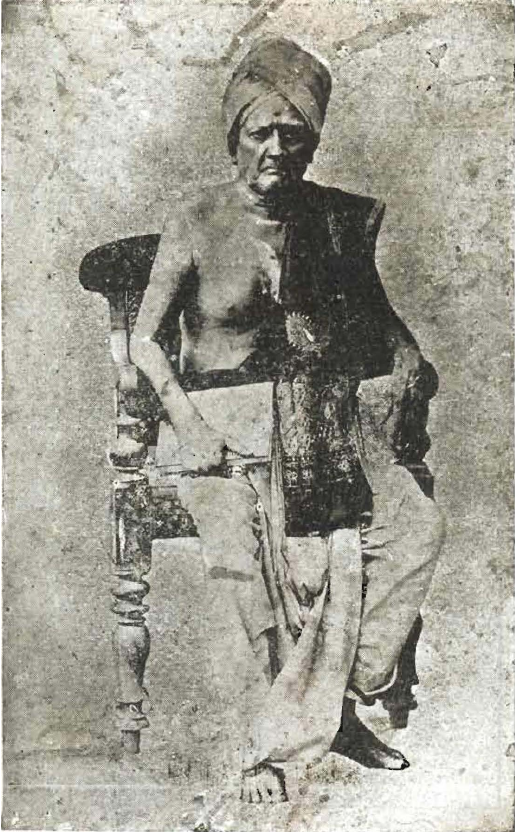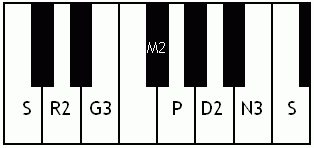|
Millennium Stars
''Millennium Stars'' is a 2000 Indian Malayalam-language drama film directed by Jayaraj, starring Jayaram and Suresh Gopi in lead roles, and also features Biju Menon and Abhirami. The soundtrack of the film was composed by Vidyasagar. The movie was also the first Malayalam movie to be released in this millennium. Biju Menon won the Asianet Film Award for Best Supporting Actor for this film. Later dubbed into Tamil and released as ''Sivasankar''. Plot When they were children, Shiva and Shankar went to Mumbai in search of a living. Circumstances puts them in jail, where they meet a bully named Karunan. They escape from jail. Several years later, Shankar and Shiva dream of becoming singers. Karunan is still active as a criminal. Through their hard work, the Shiva-Shankar duo become successful singers and start being called "millennium stars". Then the villain enters and tries to separate the two. Karunan convinces them not to separate. Cast *Jayaram as Shankar *Suresh Gopi as ... [...More Info...] [...Related Items...] OR: [Wikipedia] [Google] [Baidu] |
Jayaraj
Jayarajan Rajasekharan Nair, professionally credited as Jayaraj, is an Indian filmmaker, who predominantly works in Malayalam film industry. He has won many awards, including Crystal Bear at the Berlin International Film Festival, the Golden Peacock award at the IFFI, and the FIPRESCI Award from the International Federation of Film Critics. He is also a seven-time recipient of the National Film Award and several Kerala State Film Awards. His films include ''Paithrukam'' (1993), ''Desadanam'' (1996), '' 4 The People'' (2004), ''Vellapokkathil'' (2007), ''Ottaal'' (2015), and ''Bhayanakam'' (2018). He is the founder of the Birds Club International and is actively involved in philanthropic work. Early life During his stay at Thiruvananthapuram, he attended film festivals including the International Film Festival of Kerala and watched many world classics. Kurosawa's ''Rashomon'' and DeSica's ''Bicycle Thieves'' were among them, and they influenced him immensely. Career Bh ... [...More Info...] [...Related Items...] OR: [Wikipedia] [Google] [Baidu] |
Chennai
Chennai (, ), formerly known as Madras ( the official name until 1996), is the capital city of Tamil Nadu, the southernmost Indian state. The largest city of the state in area and population, Chennai is located on the Coromandel Coast of the Bay of Bengal. According to the 2011 Indian census, Chennai is the sixth-most populous city in the country and forms the fourth-most populous urban agglomeration. The Greater Chennai Corporation is the civic body responsible for the city; it is the oldest city corporation of India, established in 1688—the second oldest in the world after London. The city of Chennai is coterminous with Chennai district, which together with the adjoining suburbs constitutes the Chennai Metropolitan Area, the 36th-largest urban area in the world by population and one of the largest metropolitan economies of India. The traditional and de facto gateway of South India, Chennai is among the most-visited Indian cities by foreign tourists. It was ranked the ... [...More Info...] [...Related Items...] OR: [Wikipedia] [Google] [Baidu] |
2000s Musical Films
S, or s, is the nineteenth letter in the Latin alphabet, used in the modern English alphabet, the alphabets of other western European languages and others worldwide. Its name in English is ''ess'' (pronounced ), plural ''esses''. History Origin Northwest Semitic šîn represented a voiceless postalveolar fricative (as in 'ip'). It originated most likely as a pictogram of a tooth () and represented the phoneme via the acrophonic principle. Ancient Greek did not have a phoneme, so the derived Greek letter sigma () came to represent the voiceless alveolar sibilant . While the letter shape Σ continues Phoenician ''šîn'', its name ''sigma'' is taken from the letter ''samekh'', while the shape and position of ''samekh'' but name of ''šîn'' is continued in the '' xi''. Within Greek, the name of ''sigma'' was influenced by its association with the Greek word (earlier ) "to hiss". The original name of the letter "sigma" may have been ''san'', but due to the complic ... [...More Info...] [...Related Items...] OR: [Wikipedia] [Google] [Baidu] |
2000s Malayalam-language Films
S, or s, is the nineteenth letter in the Latin alphabet, used in the modern English alphabet, the alphabets of other western European languages and others worldwide. Its name in English is ''ess'' (pronounced ), plural ''esses''. History Origin Northwest Semitic šîn represented a voiceless postalveolar fricative (as in 'ip'). It originated most likely as a pictogram of a tooth () and represented the phoneme via the acrophonic principle. Ancient Greek did not have a phoneme, so the derived Greek letter sigma () came to represent the voiceless alveolar sibilant . While the letter shape Σ continues Phoenician ''šîn'', its name ''sigma'' is taken from the letter ''samekh'', while the shape and position of ''samekh'' but name of ''šîn'' is continued in the '' xi''. Within Greek, the name of ''sigma'' was influenced by its association with the Greek word (earlier ) "to hiss". The original name of the letter "sigma" may have been ''san'', but due to the complic ... [...More Info...] [...Related Items...] OR: [Wikipedia] [Google] [Baidu] |
Bahudari
Bahudari (pronounced bahudāri) is a rāgam in Carnatic music (musical scale of South Indian classical music). It is a derived scale (''janya'' rāgam), as it does not have all the seven ''swaras'' (musical notes), derived from the 28th Melakarta raga Harikambhoji.''Ragas in Carnatic music'' by Dr. S. Bhagyalekshmy, Pub. 1990, CBH Publications Structure and Lakshana ''Bahudari'' is an asymmetric scale that does not contain ''rishabham''. It is called a ''shadava-audava'' rāgam,''Raganidhi'' by P. Subba Rao, Pub. 1964, The Music Academy of Madras in Carnatic music classification (as it has 6 notes in ascending and 5 notes in descending scale). Its ' structure is as follows (see ''swaras'' in Carnatic music for details on below notation and terms): * : * : This scale uses the notes ''shadjam, antara gandharam, shuddha madhyamam, panchamam, chathusruthi dhaivatham'' and ''kaisiki nishadam''. Popular compositions Bahudari is a melodious rāgam. Here are some popular c ... [...More Info...] [...Related Items...] OR: [Wikipedia] [Google] [Baidu] |
Charukesi
Charukesi (pronounced chārukēśi) is a rāga in Carnatic music (musical scale of South Indian classical music). It is the 26th ''Melakarta'' rāgam in the 72 ''melakarta'' rāgam system of Carnatic music. It is called Tarangini in Muthuswami Dikshitar school of Carnatic music. ''Charukesi'' is known to incite feelings of pathos and devotion in the listener. Structure and Lakshana It is the 2nd rāgam in the 5th ''chakra Bana''. The mnemonic name is ''Bana-Sri''. The mnemonic phrase is ''sa ri gu ma pa dha ni''.''Ragas in Carnatic music'' by Dr. S. Bhagyalekshmy, Pub. 1990, CBH Publications Its structure (ascending and descending scale) is as follows (see '' swaras in Carnatic music'' for details on below notation and terms): * : * : (''chathusruthi rishabham, anthara gandharam, shuddha madhyamam, shuddha dhaivatham, kaisiki nishadham'') It is a ''sampoorna'' rāgam - a rāgam that has all seven ''swaras'' (notes). It is the ''shuddha madhyamam'' equivalent of ''Rish ... [...More Info...] [...Related Items...] OR: [Wikipedia] [Google] [Baidu] |
Nata (raga)
Nata (nāṭa) is a rāgam in Carnatic music (musical scale of South Indian classical music), sometimes spelled Nattai. It is a ''janya'' rāgam (derived scale) from the 36th ''melakarta'' scale ''Chalanata''. It is a ''janya'' scale, as it does not have all the seven ''swaras'' (musical notes) in the descending scale. It is a combination of the ''sampurna raga'' scale ''Chalanata'' and the pentatonic scale ''Gambhiranata''.''Ragas in Carnatic music'' by Dr. S. Bhagyalekshmy, Pub. 1990, CBH Publications''Raganidhi'' by P. Subba Rao, Pub. 1964, The Music Academy of Madras It is an auspicious raga, which is mostly sung in the early part of the concert. There is a raaga named Nata in Hindusthani music as well, and another raaga named Shuddha Nat. But they are sung rarely, and have no association with the Nattai of Carnatic Music. Structure of Lakshana ''Nata'' is an ASYMMETRIC rāgam that does not contain ''gandharam'' and ''dhaivatam'' in the descending scale. It is an ' ... [...More Info...] [...Related Items...] OR: [Wikipedia] [Google] [Baidu] |
Muthuswami Dikshitar
Muthuswami Dikshitar (Mudduswamy Dikshitar)(, 24 March 1776 – 21 October 1835), mononymously Dikshitar, was a South Indian poet, singer and veena player, and a legendary composer of Indian classical music, who is considered one of the musical trinity of Carnatic music. Muthuswami Dikshitar was born on 24 March 1775 in Tiruvarur near Thanjavur, in what is now the state of Tamil Nadu in India, to a family that is traditionally traced back to Virinichipuram in the northern boundaries of the state. His compositions, of which around 500 are commonly known, are noted for their elaborate and poetic descriptions of Hindu gods and temples and for capturing the essence of the raga forms through the vainika (veena) style that emphasises gamakas. They are typically in a slower speed (chowka kala). He is also known by his signature name of Guruguha which is also his mudra (and can be found in each of his songs). His compositions are widely sung and played in classical concerts of Carnatic mu ... [...More Info...] [...Related Items...] OR: [Wikipedia] [Google] [Baidu] |
Kalyani (raga)
Kalyani is a melakarta raga (parent musical scale) in the Carnatic music. It was called Kalyan but is now more popularly called Yaman (raga), Yaman in Hindustani Music. Its Western equivalent is the Lydian mode. Kalyani in Carnatic music In South Indian weddings it is a very prominently played raga. The word ''Kalyani'' means ''she who causes auspicious things''. It is the 65th melakarta raga under the Katapayadi Katapayadi sankhya, sankhya. It is also called ''Mechakalyani''. The notes for Kalyani are S R2 G3 M2 P D2 N3. Kalyani is the first Prathi Madhyama raga that was ever discovered. It was obtained by the process of Graha Bhedam or modal shift of tonic of the ancient Shadja Grama. Specifics on this raga Kalyani has scope for elaborate alapana. One should not remain too long on panchamam (pa) or alternate between shadjamam and panchamam too frequently. Kalyani is prominently known among the public. It is often performed at the beginning of concerts because it is conside ... [...More Info...] [...Related Items...] OR: [Wikipedia] [Google] [Baidu] |
Poonthanam Nambudiri
Poonthanam Nambudiri (1547–1640AD) was a famous poet and a devotee of Guruvayurappan, who lived in Keezhattoor in what is now Malappuram district, Kerala, India. He is remembered for his masterpiece, ''Jnanappana'' which means "the song of divine wisdom" in Malayalam. His other chief poems in Malayalam are ''Bhasha Karnamritam'' and ''Kumaraharanam'' or ''Santanagopalam Pana''. His other works include ''Raghaviyam'', ''Vishnuvilasam'' and ''Sitaraghavam'' in Sanskrit and ''Vishnugeeta'' and ''Panchatantram'' in modern Malayalam. Many hymns and prayer songs which are still popular in Kerala have been attributed to Poonthanam. Early life Poonthanam was born in 1547 in the month of masi on the day of Aswini, at Keezhattoor, near Perinthalmanna in Malapuram district, into a Namboodiri Brahmin family. He married at 20, but for a long time, they had no children. He began to propitiate the Lord of Guruvayur by reciting the ‘ anthana Gopalam�� and a son was born. He call ... [...More Info...] [...Related Items...] OR: [Wikipedia] [Google] [Baidu] |
Hariharan (singer)
Hariharan (born 3 April 1955) is an Indian playback, bhajan and ghazal singer who predominantly sings in Tamil, Hindi and Telugu languages. He has also sung over 15,000 notable songs in 10 regional languages including Malayalam, Kannada, Marathi, Sinhala and Bhojpuri. He is an established ghazal singer and one of the pioneers of Indian fusion music. In 2004, he was honoured with the Padma Shri by the Government of India and is a two-time National Award winner. Hariharan, associating with Lesle Lewis, formed Colonial Cousins, a two-member band. They have cut many private music albums and also scored music for few feature films in Tamil and Hindi. On 9 October 2021 at 13:47, Hariharan and late Gulshan Kumar's Hanuman Chalisa recorded under the label of T-Series crossed the 2-billion views mark on YouTube, making it the first devotional song in the world to do so. Personal life and education Hariharan was born to classical musicians H A S Mani and Alamelu Mani. HAS Mani - h ... [...More Info...] [...Related Items...] OR: [Wikipedia] [Google] [Baidu] |
Vijay Yesudas
Vijay Yesudas (born 23 March 1979) is an Indian playback singer and actor. He has sung over 1000 film songs. Vijay works predominantly in the South Indian film industry, mostly in Malayalam, Telugu, Tamil, Kannada, and Hindi. He is the son of acclaimed singer K. J. Yesudas. Vijay made his debut as a singer with the 2000 Malayalam film ''Millennium Stars'', which had music composed by Vidyasagar. Vijay Yesudas won three Kerala State Film Awards for Best Singer for the songs "Kolakkuzhal Vili Ketto" in '' Nivedyam'' (2007), "Akaleyo Nee" in '' Grandmaster'' and "Mazhakondu Mathram" in ''Spirit'' (2012), and "Poomuthole" in ''Joseph'' (2018). He has also won five Filmfare Awards for Best Singer and four SIIMA Awards for Best Male Playback Singer. He made a foray into acting by playing the villain role in the Tamil film '' Maari'' (2015) and the lead role in the Tamil film ''Padaiveeran'' (2018). Early life Vijay Yesudas was born to singer K. J. Yesudas and Prabha. He is th ... [...More Info...] [...Related Items...] OR: [Wikipedia] [Google] [Baidu] |




